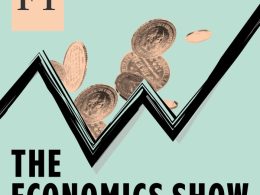Stay informed with free updates
Simply sign up to the Global Economy myFT Digest — delivered directly to your inbox.
There’s a lot going on at the moment, but the most interesting might be how the dollar has been absolutely tanked by yesterday’s tariff news.
The DXY dollar index has plunged 1.7 per cent today, taking it to its lowest since last autumn and extending its 2025 decline to almost 6 per cent.
In fact, the dollar is sliding against every single other major currency (oh, and the Swedish krona). Given how so many analysts long proclaimed that tariffs would be dollar positive, this is pretty notable.

Why is this happening? The orthodox view was that tariffs were positive for the dollar because they are inflationary — and therefore keep rates high — and make the US currency scarcer.
However, the dollar’s recent weakness could be indicative that these factors are getting swamped by broad and growing international misgivings over the US. The madness behind the methodology of the recent tariffs certainly doesn’t encourage faith in the coherence of US policymaking. And some analysts are becoming perturbed.
“We are becoming increasingly concerned that the dollar is at risk of a broader confidence crisis,” George Saravelos, head of FX strategy at Deutsche Bank, wrote in a note he sent out to clients this morning.
We’ll quote at length here, given the importance of the topic. Deutsche Bank’s emphasis below:
We have been warning about the importance of the correlation breakdown between US risk assets and the dollar for a while — European losses on US assets are now exceeding those seen during the 2022-2023 crisis. The safe haven properties of the dollar are being eroded and this is imposing a significant cost on unhedged dollar holdings. Beyond that, developments since the start of the year make us worried about a broader undermining of confidence in the US economic outlook and the medium-term desirability of dollar allocations.
All of this risks a self-fulfilling unwind of extreme US asset overweights from countries that have exported capital to the US over the last decade. Most of the developed world belongs to this category. At the end of the day, the US has a large current account deficit, and the currency is reliant on capital inflows for stability. A drop in the dollar, a drop in US equities and a rise in term premium in US treasuries would be the strongest market signal that a process of US disinvestment is accelerating. A rise in term premia on US treasuries has not materialized yet, but it would be a very negative signal if it did.
Our overall message is that there is a risk that major shifts in capital flow allocations take over from currency fundamentals and that FX moves become disorderly. We would caution that if the dollar decline accelerates, it would be a highly unwelcome development for global central banks. The last thing the ECB wants is an externally imposed disinflationary shock from a loss in dollar confidence and a sharp appreciation in the euro on top of tariffs. Expect pushback. We are in the midst of dramatic regime change in markets.
Source link









